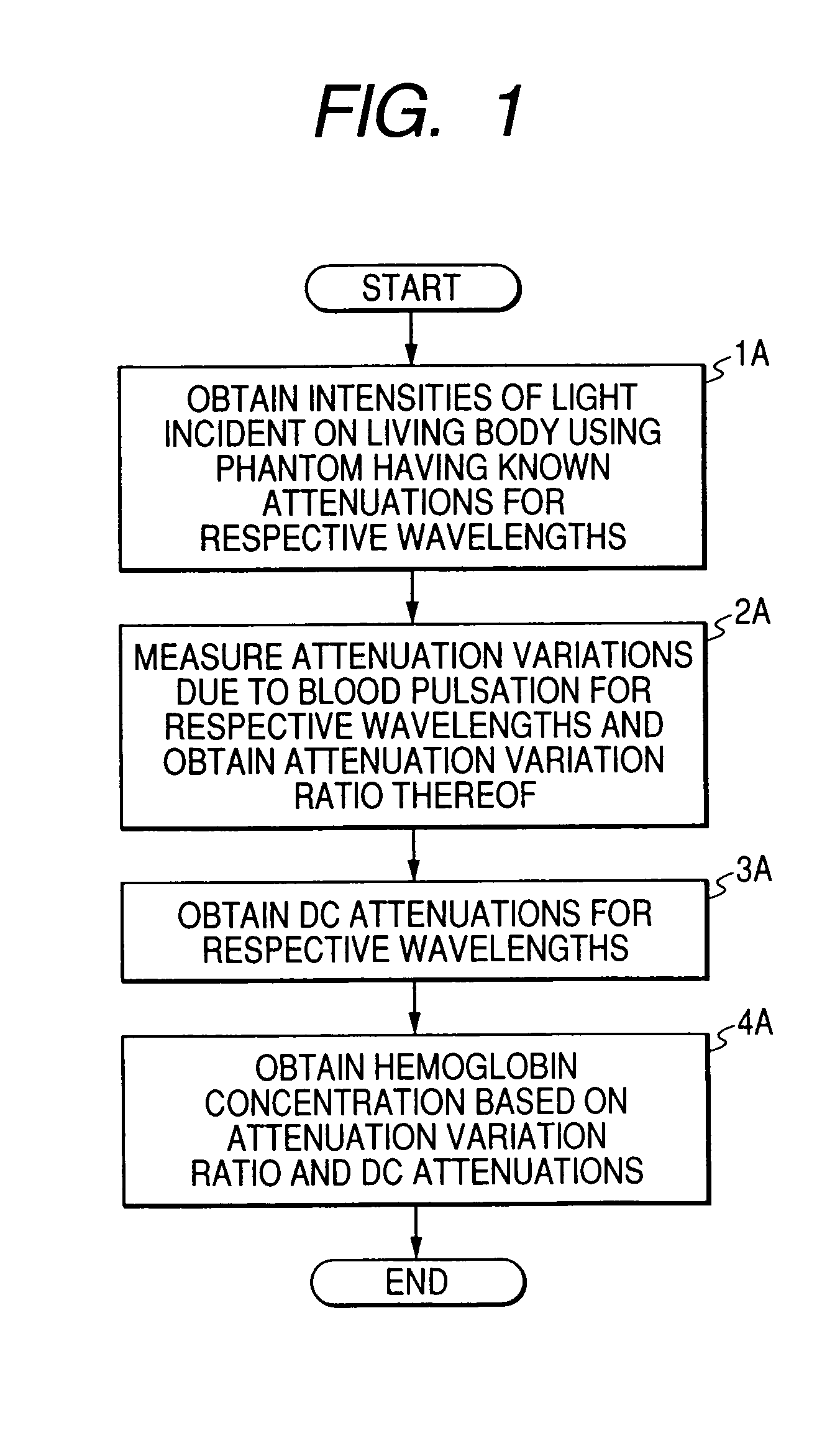Apparatus for measuring concentration of light-absorbing substance in blood
a technology of light-absorbing substances and measuring apparatuses, which is applied in the field of improving the measurement apparatus for the concentration of light-absorbing substances in blood, can solve the problems of not being considered, and achieve the effect of accurate measurement of concentration
- Summary
- Abstract
- Description
- Claims
- Application Information
AI Technical Summary
Benefits of technology
Problems solved by technology
Method used
Image
Examples
first embodiment
[0102]In step 1B, the intensity of the light incident on the living body 30 is measured. Specifically, the intensity of light radiated from the three LEDs 20a, 20b, and 20c of the probe onto the living body 30 is determined. As in the step 1A to be performed by the apparatus of the first embodiment, the operator places the phantom 30A at a predetermined position between the LEDs 20a, 20b, and 20c of the probe and the photodiode 60 and instructs the CPU 140 to start measuring the intensity of the incident light by operating the calibration switch. The CPU 140 performs calculating operation of the following equations by substituting the light intensities ltcal1, ltcal2, and ltcal3 of the three wavelengths of the light beams having passed through the phantom 30A, thereby determining incident light intensities lical1, lical2, and lical3 of three wavelengths and storing them into the memory 150.
lical1=ltcal1·exp(Af1)
lical2=ltcal2·exp(Af2)
lical3=ltcal3·exp(Af3)
Here, Af1, Af2, and Af3 deno...
second embodiment
[0121]However, as shown in FIG. 9, a program of processing to be performed by the CPU 140 differs from that described in the Moreover, the first wavelength assumes a value of 940 nm; the second wavelength assumes a value of 660 nm; and the third wavelength assumes a value of 805 nm. Operation of the apparatus will be described hereinbelow by reference to FIG. 9.
[0122]In step 1C, the intensity of the light incident on the living body 30 is measured. As in the case of step 1B to be performed by the apparatus of the second embodiment, the incident light intensities lical1, lical2, lical3 of the three light beams having different wavelengths are determined through use of the phantom 30A, and the thus-determined incident light intensities are stored in the memory 150.
[0123]In next step 2C, after having attached the probe to the living body 30, the operator infuses a dye into the blood of the living body 30. For instance, indocyanine green is used as a dye. A ratio between changes in the...
PUM
| Property | Measurement | Unit |
|---|---|---|
| wavelengths | aaaaa | aaaaa |
| wavelengths | aaaaa | aaaaa |
| wavelengths | aaaaa | aaaaa |
Abstract
Description
Claims
Application Information
 Login to View More
Login to View More - R&D
- Intellectual Property
- Life Sciences
- Materials
- Tech Scout
- Unparalleled Data Quality
- Higher Quality Content
- 60% Fewer Hallucinations
Browse by: Latest US Patents, China's latest patents, Technical Efficacy Thesaurus, Application Domain, Technology Topic, Popular Technical Reports.
© 2025 PatSnap. All rights reserved.Legal|Privacy policy|Modern Slavery Act Transparency Statement|Sitemap|About US| Contact US: help@patsnap.com



